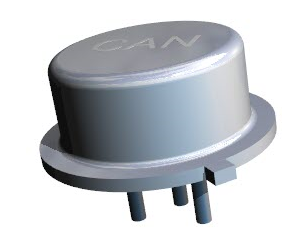Metal can IC packages, also known as TO (Transistor Outline) can packages, were among the first types of packaging used for early integrated circuits and continue to be used for certain applications today. They are known for their characteristic metal "can" appearance.
The metal can, usually made from aluminum or steel, provides both physical protection and electromagnetic shielding for the integrated circuit inside. The metal leads protrude from the base of the can and are used to connect the IC to the rest of the circuit.

Metal Can Package
Examples of metal can packages include:
•TO-3: This is a large, high-power package often used for power transistors and voltage regulators. It typically has two leads and a metal tab for mounting and heat dissipation.
•TO-5: This package is smaller than the TO-3 and is commonly used for low-power transistors and integrated circuits. It typically has between 3 and 8 leads.
•TO-8: Similar to the TO-5, but typically has a larger number of leads, making it suitable for more complex ICs.
•TO-18: This is a smaller package used for low-power transistors and diodes. It typically has three leads.
•TO-39: This package is similar in size to the TO-5 but typically has a higher lead count.
Metal can packages are rugged and offer good heat dissipation, but they are generally more expensive and larger than modern plastic packages, limiting their use in compact, cost-sensitive applications. They are often used in military and aerospace applications due to their reliability and robustness.
As always, the specific properties of an IC, such as its pin-out and electrical characteristics, will depend on the specific IC and its manufacturer. It's important to refer to the data-sheet for detailed information.